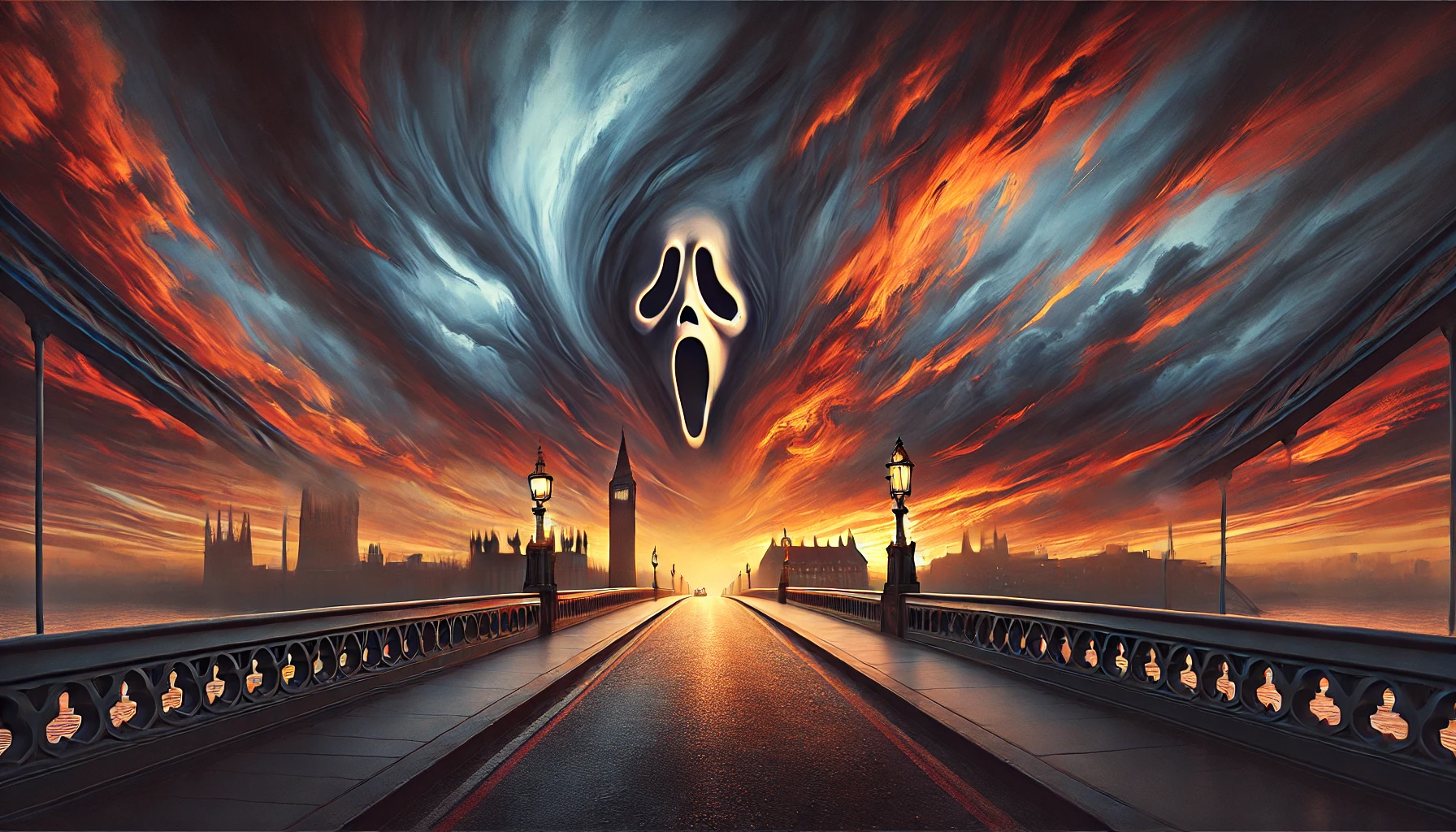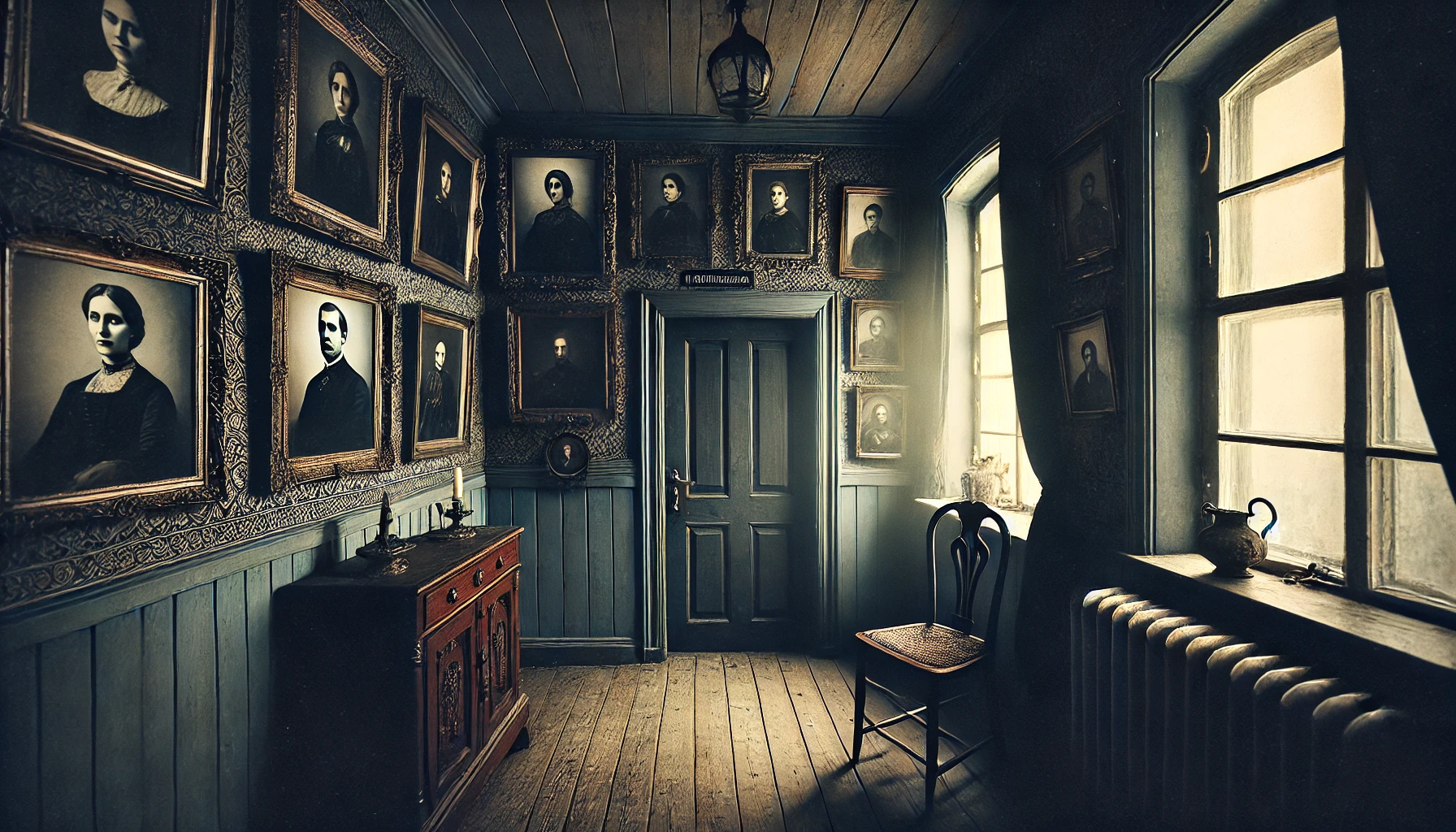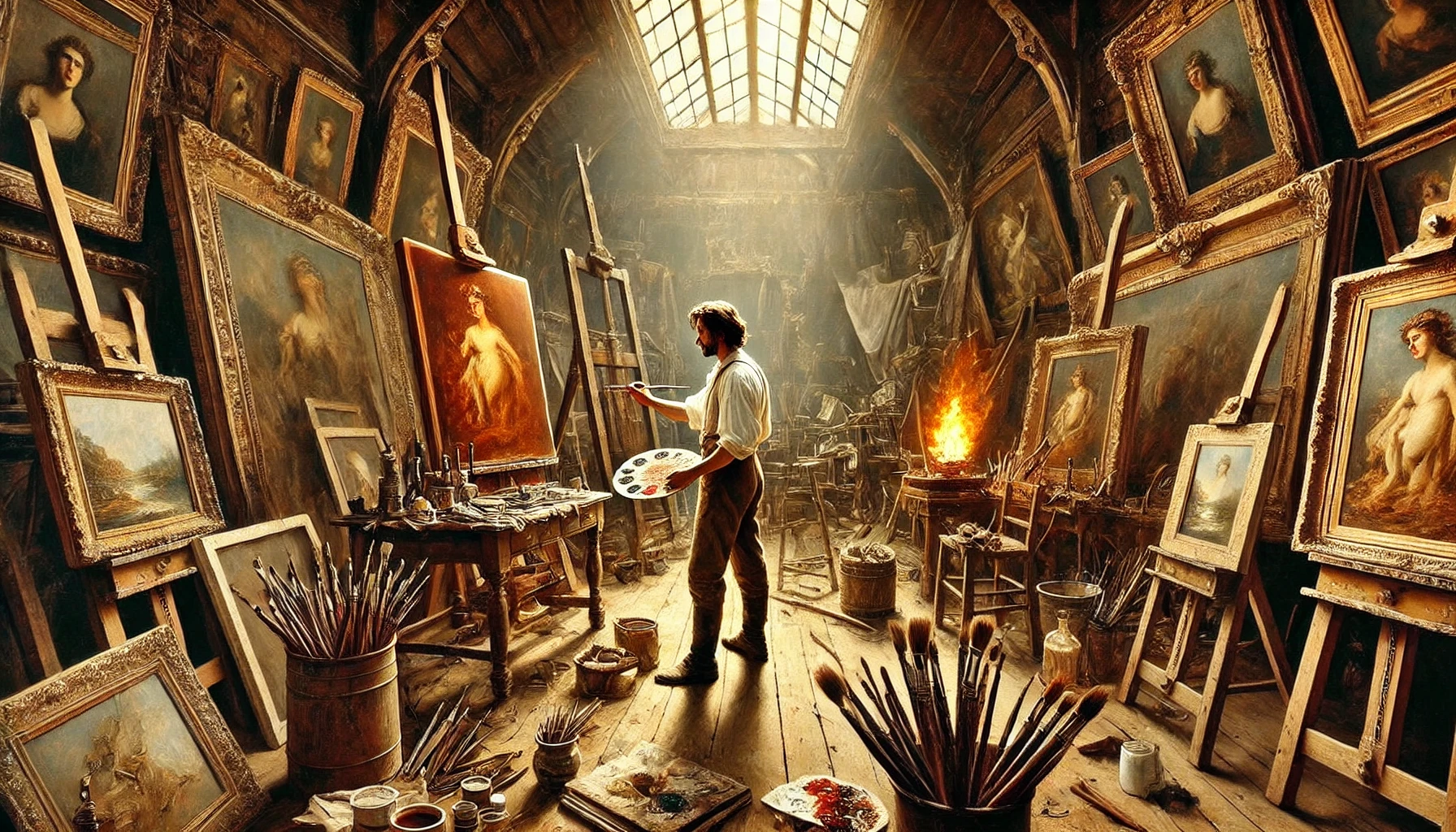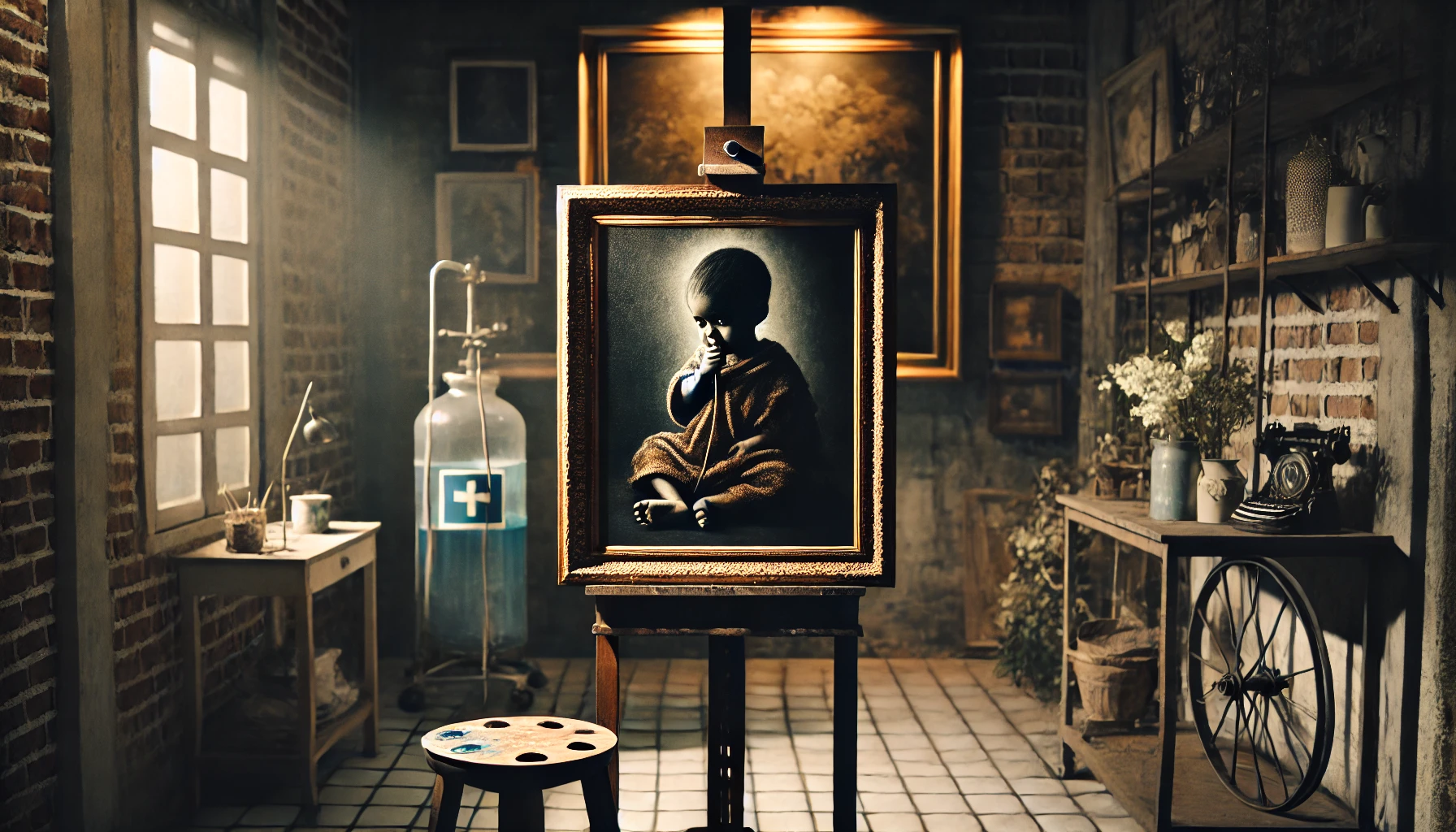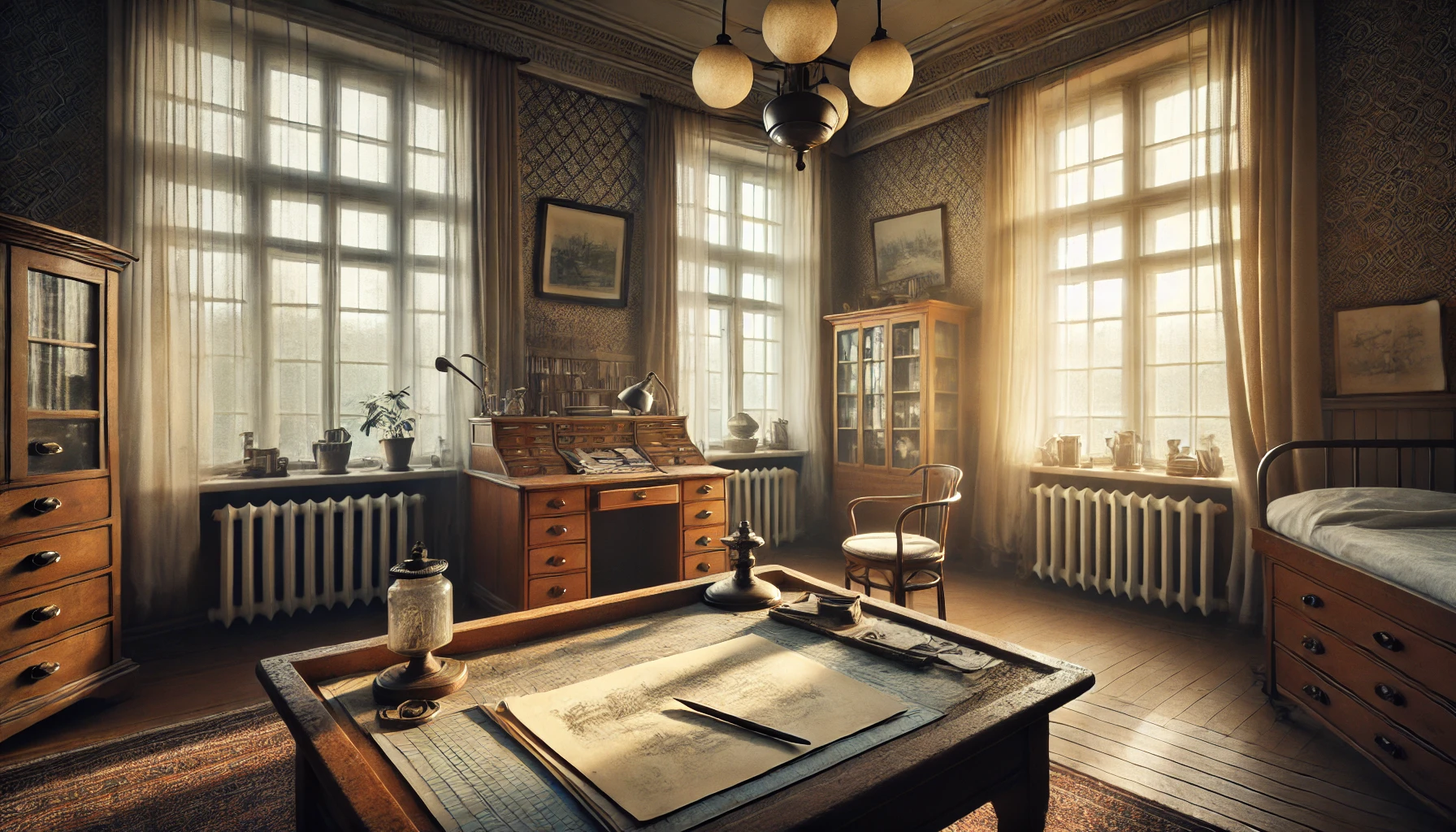Early years: a childhood tinged with tragedy
Edvard Munch was born on December 12, 1863 in Loten, Norway, into a family that knew illness and death firsthand. His mother died of tuberculosis when Edvard was only five years old, and his older sister, Sophie, succumbed to the same disease nine years later. This series of early tragedies deeply marked Munch’s psyche, leaving an indelible mark that would be reflected in his artistic work.
Adolescence and youth: art as salvation
As Munch grew older, his interest in art intensified. He began studying engineering, but soon dropped out to devote himself entirely to painting. In 1881, he entered the Royal School of Art and Design in Christiania (present-day Oslo). Illness and death, constants in his life, became recurring themes in his work. Munch used to say that illness, madness and death were the black angels that watched over his cradle.
Early works and unique style
Munch developed a very personal style, characterized by the use of undulating lines and intense colors that conveyed deep emotions. His painting “The Sick Girl” (1886) is one of his first important works, where he captures the fragility of life and the sadness of loss. Through his art, Munch sought to express his deepest feelings and the traumatic experiences of his life.
“The Scream”: the echo of a tormented mind
In 1893, Munch created his most famous work, “The Scream”. This painting has become an icon of modern art and depicts the existential cry of a man faced with anguish and fear. Munch described the inspiration for this work as a moment when he felt an infinite scream pierce through nature while walking with two friends. This image has resonated with millions of people around the world, becoming a symbol of human anxiety and suffering.
Personal struggles and mental crisis
Throughout his life, Munch struggled with mental health problems, including bouts of anxiety and depression. In 1908, he suffered a severe nervous breakdown and was committed to a clinic in Copenhagen. During his recovery, Munch focused on art as therapy, creating works that reflected his process of healing and self-knowledge. His ability to transform pain into beauty is a testament to his resilience and talent.
Later years and legacy
In his later years, Munch retired to an estate outside Oslo, where he continued to paint until his death in 1944. His work has left an indelible mark on the art world, inspiring generations of artists and art lovers. Munch was not only a master of emotional expression through art, but also a pioneer in the exploration of the human psyche and its complexities.
The importance of Munch in the conversation about mental health.
Edvard Munch’s life and work underscore the importance of talking about mental health and combating the stigma associated with mental disorders. His paintings remind us that emotional suffering is a universal part of the human experience and that creativity can be a powerful healing tool. Munch transformed his pain into art, offering comfort and inspiration to those facing similar challenges.
Featured works by Edvard Munch
- The Scream (1893)
- The Sick Girl (1886)
- The Kiss (1897)
- Anxiety (1894)
- Madonna (1894-1895)
NOTE: The images in this article are merely illustrative and were created with artificial intelligence.
Sources
- Prideaux, Sue. Edvard Munch: Behind the Scream. Yale University Press, 2005.
- Eggum, Arne. Edvard Munch: Paintings, Sketches, and Studies. Harry N. Abrams, 1984.
- Munch, Edvard. The Private Journals of Edvard Munch: We Are Flames Which Pour Out of the Earth. University of Wisconsin Press, 2005.


